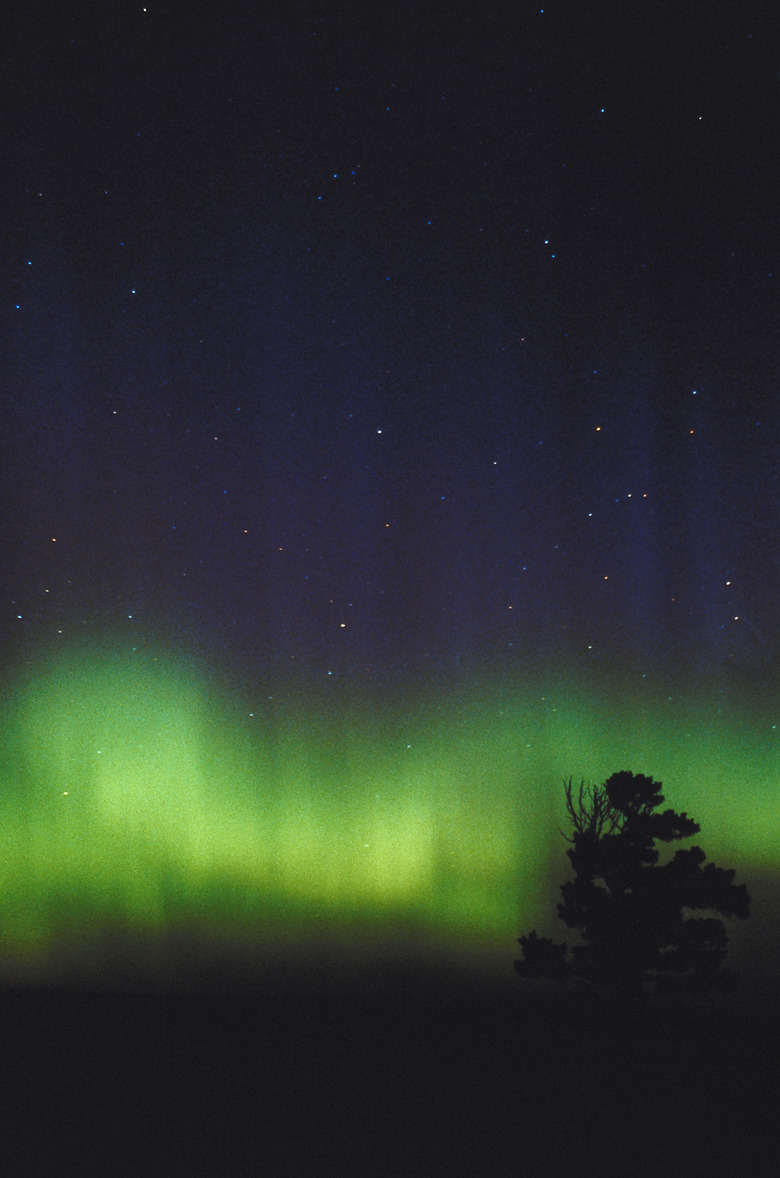What Is The Earth's Atmosphere Composition & Temperature?
The Earth's atmosphere has five distinct layers. These layers protect the Earth from ultraviolet radiation, keep the surface of the planet habitable via the greenhouse effect and provide the necessary oxygen to breathe.
Earth’s Atmosphere: The Overall Picture
Earth's Atmosphere: The Overall Picture
The Earth's orbit around the sun keeps the planet at an ideal distance where temperatures support liquid water on the surface to maintain life.
**Temperature of atmosphere:**
The Earth's temperature range in Fahrenheit is from 2,700 degrees Fahrenheit (1,500 degrees Celsius) in the uppermost atmosphere to a global average temperature of around 59 degrees Fahrenheit (15 degrees Celsius) near the surface.
**Composition of atmosphere:**
The composition of the atmosphere is mostly nitrogen and oxygen, though it begins to thin out within 10 miles (16 kilometers) from the Earth's surface.
The Troposphere
The Troposphere
**Altitude:**
The troposphere layer extends from the Earth's surface to a height between 4 and 12 miles (6 and 20 kilometers). It varies with latitude. At the equator it can reach 12 miles (20 kilometers), and at the poles it reaches about 4 miles (6 kilometers).
**Composition:**
Nearly 75 percent of the atmosphere resides in the troposphere. The composition contains mostly nitrogen and oxygen:
- Nitrogen, 78.08 percent
- Oxygen, 20.95 percent
- Water, 0 to 4 percent (water vapor has the highest
concentration near the equator, and the lowest in the desert and polar regions)
- Argon, 0.93 percent
- Carbon dioxide, 0.04 percent
- Trace amounts of neon, helium, methane, hydrogen, nitrogen oxides and ozone
- Particulate matter such as dust, volcanic ash
**Temperature:**
Near the surface of the Earth, the global average temperature is 59 degrees Fahrenheit (15 degrees Celsius). At the uppermost boundary of the troposphere, the air reaches nearly negative 76 degrees Fahrenheit (negative 60 degrees Celsius).
The Stratosphere
The Stratosphere
**Altitude:**
The stratosphere begins at the uppermost level of troposphere and extends to 31 miles (50 kilometers) above the Earth's surface.
**Composition:**
The stratosphere holds 85 percent to 90 percent of atmospheric ozone created by photolysis, the decomposition by solar radiation, of oxygen. This layer of ozone protects living things on Earth from harmful ultra-violet radiation from the Sun. The composition of the stratosphere:
- contains gases from troposphere but fewer of them
- other gases present: nitrous oxide, methane and
chlorofluorocarbons that come from the troposphere
- very little water vapor
- volcanic eruptions on Earth inject sulfide
compounds, halogen gases such as hydrogen chloride and fluoride and particles of inorganic silicate and sulfate compounds
**Temperature:**
The temperature in the stratosphere ranges from negative 60 degrees Fahrenheit (negative 51 degrees Celsius) at the troposphere boundary to negative 5 degrees Fahrenheit (negative 15 degrees Celsius) at the top. The temperature increase is due to the ozone layer that absorbs ultraviolet light from solar radiation.
The Mesosphere
The Mesosphere
**Altitude:**
The mesosphere extends from the boundary of the stratosphere to 53 miles (85 kilometers) above the Earth's surface. It contains the coldest temperatures in the Earth's atmosphere.
**Composition:**
The composition of the mesosphere is increasingly thinner gases from the troposphere and stratosphere layers. In addition, meteors vaporize in the mesosphere, giving it a higher concentration of iron and other metal ions.
**Temperature:**
The temperature ranges from negative 5 degrees Fahrenheit (negative 15 degrees Celsius) at the stratosphere boundary to negative 184 degrees Fahrenheit (negative 120 degrees Celsius) at the upper boundary.
The Thermosphere
The Thermosphere
**Altitude:**
From the top of the mesosphere, the thermosphere extends to 311 to 621 miles (500 to 1,000 kilometers) above the Earth's surface.
**Composition:**
Only trace amounts of the atmosphere (from the troposphere) may be detected in the thermosphere layer. Any carbon dioxide gases that contribute to a warming of the troposphere cause a cooling in the thermosphere as they radiate heat back to space.
The charged particles from space that collide with atoms to create aurora borealis (northern lights) and aurora australis (southern lights) are in the thermosphere layer.
**Temperature:**
The temperature ranges from negative 184 degrees Fahrenheit at the mesosphere's upper boundary to 3,600 degrees Fahrenheit (2,000 degrees Celsius) near the upper boundary as ultraviolet and X-ray radiation from the sun is absorbed.
The Exosphere
The Exosphere
**Altitude:**
The exosphere has no clear boundary as it gradually dissolves to outer space. Some scientists place it at heights of 62,000 miles (100,000 kilometers) above Earth.
**Composition:**
The composition of the exosphere is sparse as atoms and molecules slowly dissipate into space. Within this layer, hydrogen atoms scatter ultraviolet radiation and individual gas molecules are either pulled back toward Earth by gravitational forces or fly off into space.
**Temperature of Exosphere:**
The temperature range of the exosphere can reach up to 2,700 degrees Fahrenheit (1,500 degrees Celsius) in the uppermost atmosphere as the thin air transmits little heat.
Cite This Article
MLA
Kozlowski, Rosann. "What Is The Earth's Atmosphere Composition & Temperature?" sciencing.com, https://www.sciencing.com/earths-atmosphere-composition-temperature-19463/. 1 March 2020.
APA
Kozlowski, Rosann. (2020, March 1). What Is The Earth's Atmosphere Composition & Temperature?. sciencing.com. Retrieved from https://www.sciencing.com/earths-atmosphere-composition-temperature-19463/
Chicago
Kozlowski, Rosann. What Is The Earth's Atmosphere Composition & Temperature? last modified March 24, 2022. https://www.sciencing.com/earths-atmosphere-composition-temperature-19463/
